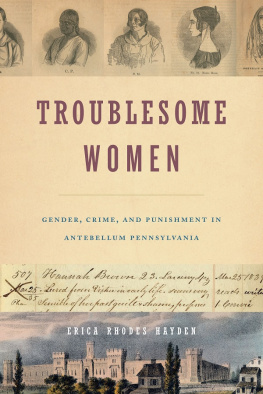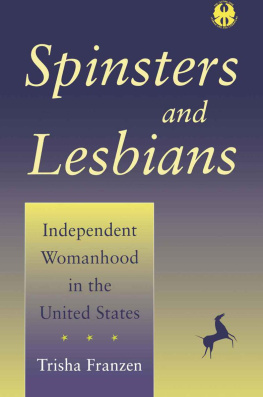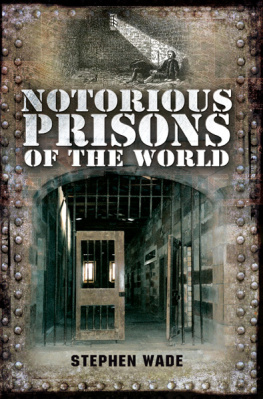Originally published as Partial Justice: Women in State Prisons 1800-1935 by Northeastern University Press, 1985.
Published 1990 by Transaction Publishers
Published 2017 by Routledge
2 Park Square, Milton Park, Abingdon, Oxon 0X14 4RN
711 Third Avenue, New York, NY 10017, USA
Routledge is an imprint of the Taylor & Francis Group, an informa business
Copyright 1990 by Taylor & Francis.
All rights reserved. No part of this book may be reprinted or reproduced or utilised in any form or by any electronic, mechanical, or other means, now known or hereafter invented, including photocopying and recording, or in any information storage or retrieval system, without permission in writing from the publishers.
Notice:
Product or corporate names may be trademarks or registered trademarks, and are used only for identification and explanation without intent to infringe.
Library of Congress Catalog Number: 89-29156
Library of Congress Cataloging-in-Publication Data
Rafter, Nicole Hahn, 1936
Partial justice : women, prison, and social control / Nicole Hahn Rafter.
2nd ed.
p. cm.
Includes bibliographical references and index.
ISBN 0-88738-826-4
1. Women prisonersUnited StatesHistory. 2. Reformatories for womenUnited StatesHistory. 3. PrisonsUnited StatesHistory.
I. Title.
HV9466.R35 1990
356.43973dc20 89-29156
CIP
ISBN 13: 978-0-88738-826-2 (pbk)
To Eleanor H. Little
Prisons fascinate the societies that create them becauseshort of the death penaltythey are the ultimate form and symbol of the power of the state over the individual. In the imagery that mesmerizes us, prisoners are anonymous masses controlled by walls, steel bars, and impersonal guards. Their fearsome punishment, suffered equally by all, is loss of liberty.
This book addresses the limitations of this powerful but simplistic image. First, the prisoners are not truly anonymous but are all men; the archetype excludes female inmates. Second, it encourages us to disregard the more subtle techniques of control developed by womens prisons to supplement the drama of walls, bars, and guards. Third, such stereotypical thinking obscures the fact that, although all prisons drastically restrict freedom, that is not necessarily their sole (or even main) function. If we cling to a unidimensional picture of penal institutions and their inmates, we cannot begin to understand the nature of the prisons power over the individual. By broadening the focus to include prisons for women, we immediately see that prisons function to control gender as well as crime. By looking at differences among womens prisons, we further learn that the objects of social control include race and social class.
Womens prisons are of theoretical interest because, both historically and into the present, they have been a point of juncture between widely disparate types of social control: formal and informal, overt and inconspicuous, brutal and simultaneously gentle, by government and by those trusted and familiar. Moreover, on occasion womens prisons have achieved the ultimate goal of social controlpersuading subjects not merely to comply but actually to internalize new values, so that they come to supervise themselves by the authorities rules. No mens prison has been so successful in the project of, literally, re-formation. Finally, by enlarging the scope of prison history to include womens institutions, we can discern variations in the degree of social control to which different groups have been subjected. Womens prisons required obedience not only to prison rules (generally more numerous for women) and criminal laws (also more numerous until recently), but also to cultural standards for femininity that fluctuated by race and social class.
It is no wonder that thinking about penal institutions is governed by the monolithic image of the mens prison: film directors, novelists, policymakers, social historians, and sociologists alike have paid little attention to women in prison. This neglect has partially stemmed from numbers: since the prison system began, only a small proportion of inmates has been female. Women in prison have also been overlooked because film directors, historians, and so on (not to mention the wardens of womens institutions) have so often been men; not surprisingly, they have found male inmates more worthy of attention. What has been ignored is both the physical presence of women in prisons and the fact that prisons themselves are gendered institutions, reflecting and reinforcing beliefs about sexual difference.
In contrast to crime, gender has only recently been subjected to historical and sociological analysis. This is not because gender is less socially important than crime, but because it is more. Gender roles are so pervasive and so taken for granted that it is difficult to recognize them as other than natural. To disregard them, however, is to engage in another form of social control because inattention masks the significance of gender and makes it impossible to analyze how gender roles are socially constructed.
Two of the most widely read social histories of prisons, David Rothmans Discovery of the Asylum and Conscience and Convenience, illustrate the consequences of slighting gender. In the first, Rothman discusses the theories around which the first penitentiaries were organized, deriving these theories from doctrinal writings about and actual accounts of the treatment of male prisoners. Had he recognized that women, as well as men, were held in these institutions and that the former often experienced a very different type of care (no solitary confinement, no rule of silence, few opportunities to labor), Rothman would have produced a more accurate analysis of the penitentiarys theoretical underpinnings. He might have concluded that the discipline of male convicts was shaped by notions of masculinityconcepts of manhood and beliefs about what men could endure.
Gender bias also mars Conscience and Convenience, central argument of which is that institutional reforms of the early twentieth century were characterized by a search for alternatives to incarceration. This thesis is contradicted by the reality that the Progressive period was one of enormous expansion within the womens prison system, a time in which institutions were established at a faster rate than in any period until the 1970s. The huge investment of reformers energies and state funds in the creation of penal institutions for femalesduring a time when womens already low rates for serious crimes underwent no apparent increasesuggests the very opposite of a search for alternatives to institutionalization. Rothmans account, like others that ignore gender, distorts our understanding of the evolution of state control.
I undertook this study to correct that distortion. When I began, in the late 1970s, only one contemporaryEstelle B. Freedmanwas also engaged in research on the history of womens prisons; and she had not yet published Their Sisters Keepers, her book on the subject. As I referred to her dissertation, published article, and (later) her book, I developed my own point of view through an inner dialogue in which I contrasted Freedmans conclusions with the implications of the data I was gathering. Freedman concentrated on a narrower point in time (the late nineteenth century, when separate prisons for women were first founded); on one type of womens prison (the reformatory, which largely held white women); and on the motives of the middle-class women who established these institutions. Her work was invaluable, providing not only raw information but also a model for feminist scholarship in this emerging field. However, because my study was broader in scope, I became aware of racial and regional differences that did not emerge in Freedmans study.







